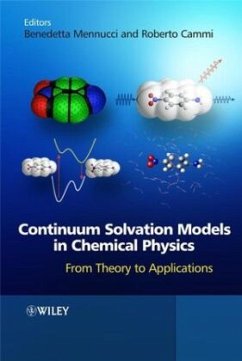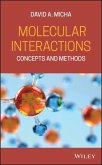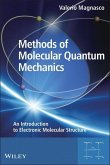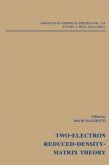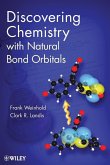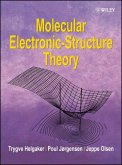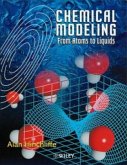The modeling of liquids and solutions with computational tools is a very complex problem and many alternative theoretical models and computational algorithms have been proposed to-date. This text picks up on one specific of methods, namely continuum solvation models, which are widely used c computational techniques applied to the study of solvent effects on energy/geometry/reactivity and properties of very different molecular systems, i.e. from small molecules to very large biochemical systems such as proteins and enzymes. For the first time, salvation continuum models are treated in an up-to-date and coherent way using very different points of view coming from experts belonging to very different research fields including mathematicians, theoretical chemists, computational chemists, spectroscopists, etc.
To this end, the presentation of the various contributions follows a step-by-step scheme in which the physical bases of the models come first followed by an analysis of both mathematical and computational aspects and finally by a review on their applications to different physical-chemical problems.
The book is divided into four parts.
_ The first focuses on a specific formulation of continuum solvation models using as a descriptor for the solvent polarization an apparent surface charge (ASC) spreading on the molecular cavity which contains the solute. The class of methods is central in the whole book as in recent years it has become the preferential approach to account of solvent effects in quantum mechanical calculations.
_ The second presents extensions and generalizations of continuum solvation models to the calculation of molecular properties (both dynamic and static) an spectroscopic features of molecular solutes in different environments of increasing complexity.
_ The third focuses on the modelization of static and dynamic solvent effects on ground state chemical reactivity and excited state reactive and non-reactive processes (electron and proton transfers as well energy transfers).
_ The fourth presents extensions and generalizations of continuum models to classical molecular dynamics simulations, to layered and to hybrid methods as well as alternative methods starting from completely different theoretical bases but still having some elements in common with continuum solvation models.
Each part of the book presents two levels of reading - One, more introductory, on the given theoretical issue or on the given application, and the second more detailed, and hence more technical, on specific physical numerical aspects involved in each issue and/or application. Thus this book presents the main aspects and applications of conti8nuum solvation models in a clear and concise format, which will be useful to the expert researcher as well as to Ph.D. students and postdoctoral workers in theoretical chemistry, computational chemistry, physical chemistry and chemical engineering.
Hinweis: Dieser Artikel kann nur an eine deutsche Lieferadresse ausgeliefert werden.
To this end, the presentation of the various contributions follows a step-by-step scheme in which the physical bases of the models come first followed by an analysis of both mathematical and computational aspects and finally by a review on their applications to different physical-chemical problems.
The book is divided into four parts.
_ The first focuses on a specific formulation of continuum solvation models using as a descriptor for the solvent polarization an apparent surface charge (ASC) spreading on the molecular cavity which contains the solute. The class of methods is central in the whole book as in recent years it has become the preferential approach to account of solvent effects in quantum mechanical calculations.
_ The second presents extensions and generalizations of continuum solvation models to the calculation of molecular properties (both dynamic and static) an spectroscopic features of molecular solutes in different environments of increasing complexity.
_ The third focuses on the modelization of static and dynamic solvent effects on ground state chemical reactivity and excited state reactive and non-reactive processes (electron and proton transfers as well energy transfers).
_ The fourth presents extensions and generalizations of continuum models to classical molecular dynamics simulations, to layered and to hybrid methods as well as alternative methods starting from completely different theoretical bases but still having some elements in common with continuum solvation models.
Each part of the book presents two levels of reading - One, more introductory, on the given theoretical issue or on the given application, and the second more detailed, and hence more technical, on specific physical numerical aspects involved in each issue and/or application. Thus this book presents the main aspects and applications of conti8nuum solvation models in a clear and concise format, which will be useful to the expert researcher as well as to Ph.D. students and postdoctoral workers in theoretical chemistry, computational chemistry, physical chemistry and chemical engineering.
Hinweis: Dieser Artikel kann nur an eine deutsche Lieferadresse ausgeliefert werden.

